Month: March 2023
Proposal to restore Prospect Park’s Vale faces criticism from LGBTQ+ advocates
March 1, 2023
By: Aaron Ginsburg
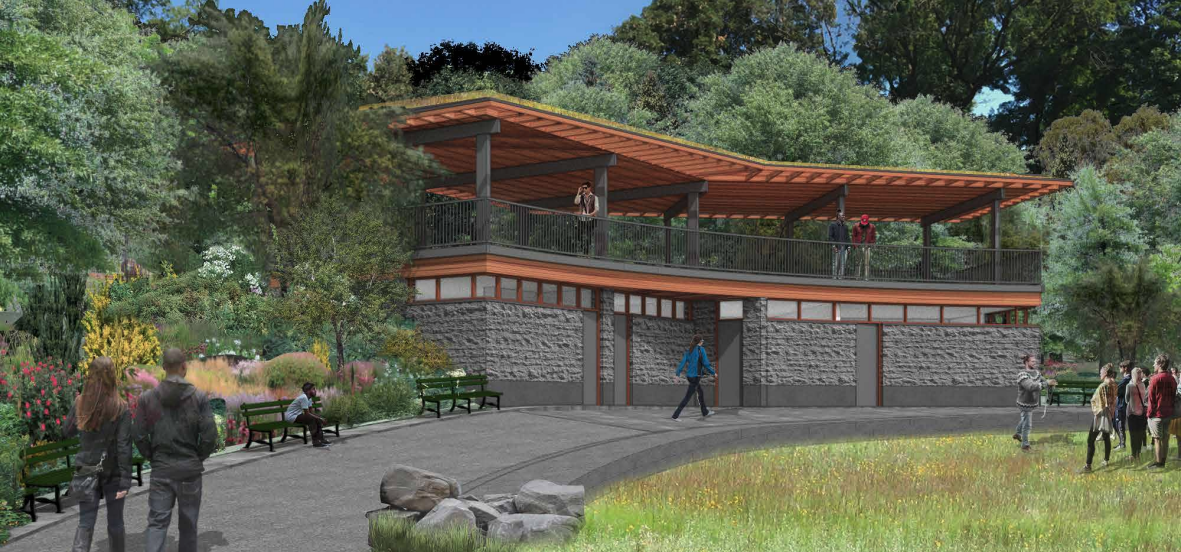
The city’s Parks Department and the Prospect Park Alliance this week unveiled plans for the restoration of the Vale of Cashmere. The proposal, presented during a Landmarks Preservation Commission hearing on Tuesday, includes a new pollinator garden, natural exploration play areas, a planted arbor, and a wooden pavilion with a green roof and bathrooms. Several LPC commissioners, preservationists, and LGBTQ+ advocates opposed the proposal for the Upper Vale, with most taking issue with the plan’s erasure of the site as a significant meeting spot for the city’s queer community as well as the disregard for the original vision of the Vale.
The Vale of Cashmere, a scenic, 26-acre portion in Prospect Park’s northeast corner, was designed by Frederick Law Olmsted and Calvert Vaux, who wanted to connect New Yorkers to nature with pools and gardens. Since it first opened, the area’s landscape has undergone a number of changes, and most recently, has fallen into a state of disrepair.
In December 2021, former Mayor Bill de Blasio announced the allocation of $40 million to restore the Vale to its former glory. The funding, the largest in the history of the Prospect Park Alliance, is set aside for the restoration of the Vale’s former Rose Garden and Children’s Pool.
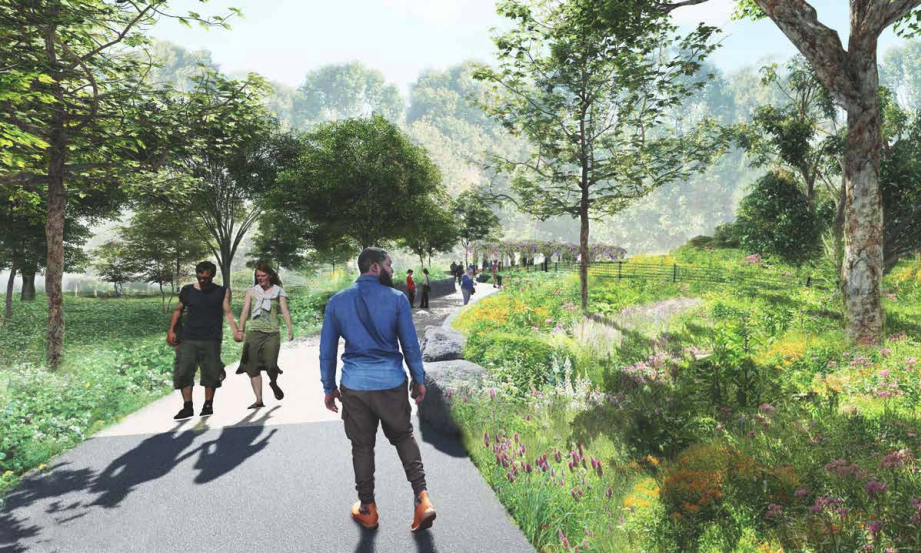
The Vale of Cashmere, a scenic, 26-acre portion in Prospect Park’s northeast corner, was designed by Frederick Law Olmsted and Calvert Vaux, who wanted to connect New Yorkers to nature with pools and gardens. Since it first opened, the area’s landscape has undergone a number of changes, and most recently, has fallen into a state of disrepair.
In December 2021, former Mayor Bill de Blasio announced the allocation of $40 million to restore the Vale to its former glory. The funding, the largest in the history of the Prospect Park Alliance, is set aside for the restoration of the Vale’s former Rose Garden and Children’s Pool.
During Tuesday’s LPC hearing, a number of preservationists and LPC commissioners criticized the proposal for the Upper Vale and northeast pavilion.
“The design of the new building is very intrusive, and it does seem to become a new, but not appropriate, focal point,” Diana Chapin, LPC Commissioner, said. “The canopy is both heavy and angular and does not fit into the landscape. I don’t know if it has to be in a new location, but the building itself and canopy should have a more picturesque and naturalistic character which is typical of Olmsted and Vaux’s designs for the park.”
The Vale of Cashmere has been a meeting and socializing spot for the LGBTQ community for more than 40 years, according to Amanda Davis, project manager of the NYC LGBT Historic Site Project.
“In the 1970s, if not earlier, the Vale of Cashmere became an important cruising, recreational, and social gathering space for the LGBTQ community, particularly for the Black queer community,” Amanda Davis, project manager of the NYC LGBT Historic Sites Project, testified on Tuesday.
“It’s imperative that the Prospect Park Alliance conduct immediate outreach with these communities and that the process be far more transparent and inclusive, so that this socially significant LGBTQ landscape is preserved and interpreted, rather than erased from the history of Prospect Park.”
Preservationist Theodore Grunewald added: “Today’s applicant is seeking a radical regrading and reconstruction, sweeping away 125 years of landscape history and knowledge into the trash, under the rationalization that the Vale is underutilized’ and are tactically using the combination of ‘stranger danger’ and ‘gay panic’ to repeat the same mistakes of 125 years ago by reimagining this natural, geological hollow, a secluded, quiet and poetic corner unlike any in New York into a busy, activated, kid-safe hub to chase away ‘undesirables and blight.’”
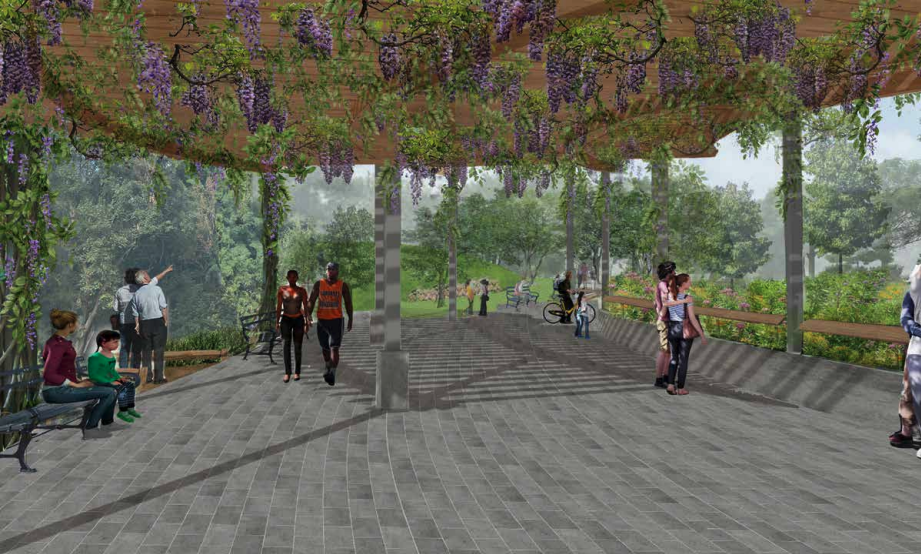
The restoration includes the construction of a planted arbor made of steel and wood along the path leading through the new pollinator meadow. The meadow, which would replace the preexisting south concrete fountain, would include a diverse variety of plantings, including trees, shrubs, and flowers.
The arbor would provide a shady rest area and include a leaning rail to take in views of the meadow stretching out below. The new arbor would be created on a preexisting pathway, and it would connect to another preexisting nature and timber trail leading to the Lower Vale.
The surrounding area would also receive enhancements, including new mesh fencing, repaved asphalt paths, granite walls, trees, and benches.
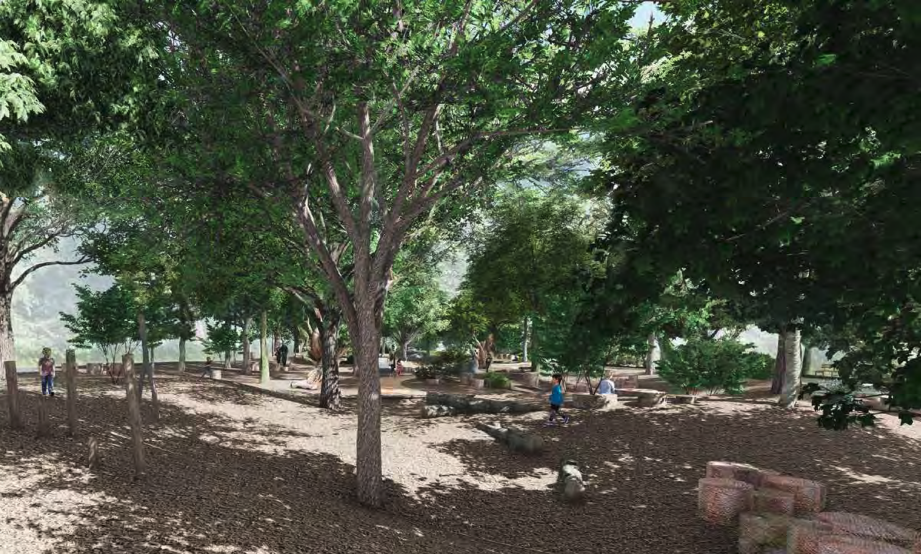
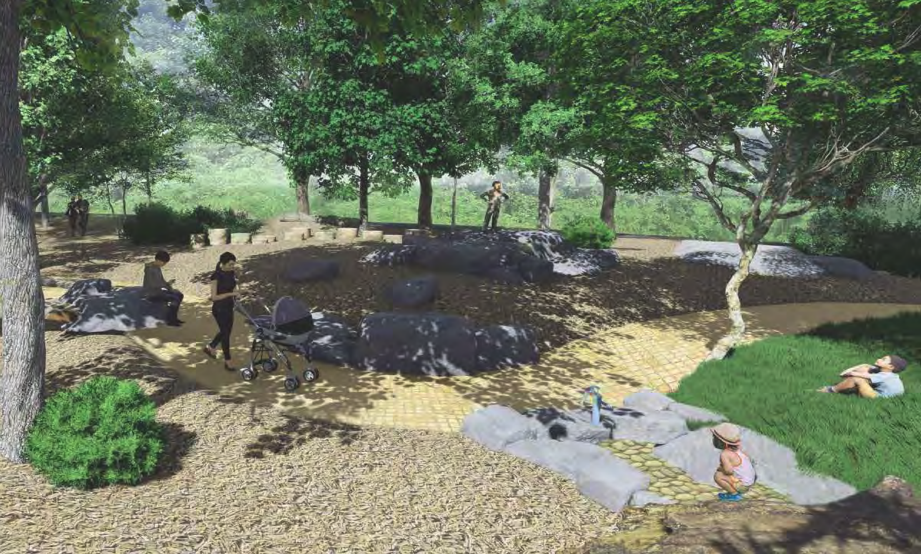
After following the path through the arbor, park visitors would reach the proposed natural exploration area. The Upper Vale’s middle concrete fountain would be replaced with an expansive area for use by kids and adults alike. The plan also calls for an obstacle course made of repurposed fallen tree logs and stumps.
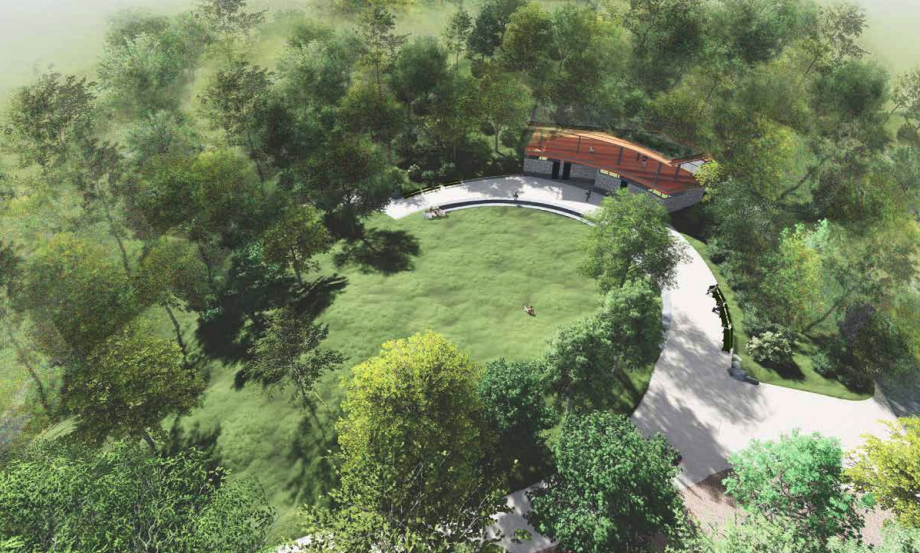
A new open lawn would replace the Vale’s north concrete fountain. The expansive open space would provide a place to sit in the sun and for recreational use. The new covered pavilion would sit on a path circling the open lawn.
Designs for the pavilion include a green rooftop with plantings, public restrooms, adjacent granite pavers and seating walls, and asphalt pathways. The new building would be constructed using wood for its canopy underside, window trim, and building trim, while granite would be used for the building’s skirt and cladding.
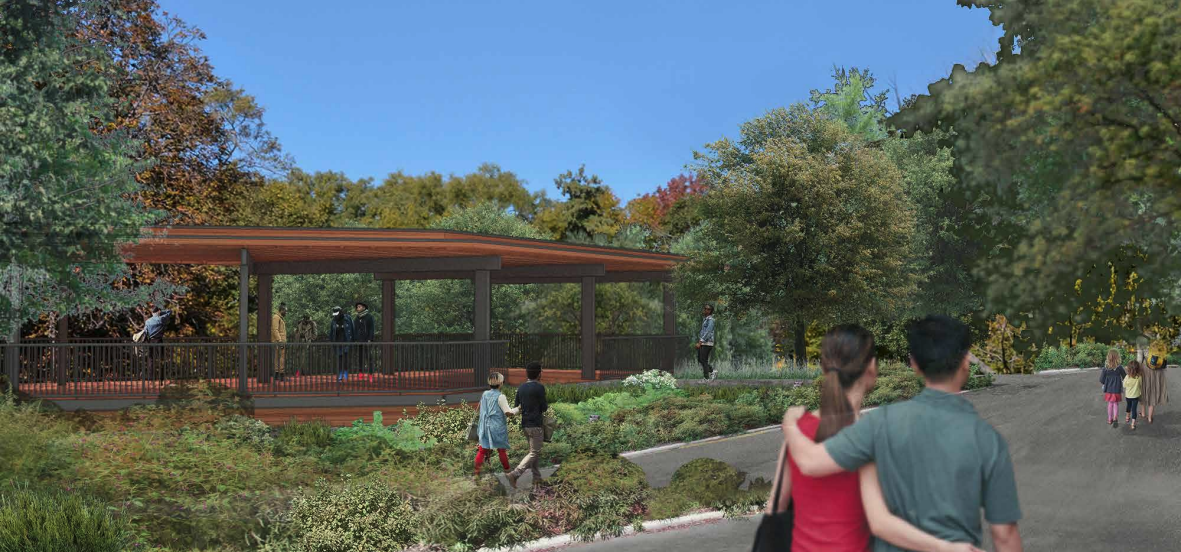
While nine commissioners voted in favor of the plan, the votes are only advisory as the LPC cannot approve or reject plans for scenic landmarks. The city’s Public Design Commission reviews the proposal next, according to The Architect’s Newspaper, and will consider input from the LPC when making its final decision.
A proposed Prospect Park development could eliminate important LGBT historic site, advocates say
February 28, 2023
By: Audrey Wachs

Today the New York City Landmarks Preservation Commission (LPC) discussed a plan to redevelop a secluded section of Prospect Park that’s also a well-known cruising spot for Brooklyn’s LGBT community.
The Prospect Park Alliance wants to build a playground and outbuilding in the Vale of Cashmere, a park-within-a-park about a ten-minute walk south of the park’s main entrance at Grand Army Plaza.
Prospect Park’s original designers envisioned the Vale of Cashmere as a naturalistic park with a pool, gardens with rare plants, and a children’s play area. Since then, Frederick Law Olmsted and Calvert Vaux’s landscape has undergone a few major changes. When McKim, Mead & White redesigned it in the early 1900s, it replaced the pool with a fountain ringed by a granite balustrade and brick walkway. The WPA worked on the site in the 1930s, and 30 years after that, landscape architect Clara Coffey redid the site with a focus on the upper portion of the Vale.

Today, the Vale of Cashmere looks tired and worn out—or charmingly decayed, depending on one’s point of view.

In the Lower Vale, the granite pond edges are chipped and uneven. The remaining granite piers for the now-gone balustrade are cracked. In the spring and summer, the pond looks more like a lawn than a body of water thanks to an overgrowth of plants and low water levels.

In the Upper Vale, three empty concrete fountains from the 1960s renovation are ringed by grass.
Nevertheless, the Vale of Cashmere is a popular spot for birders, picnickers, runners, and performances. It’s also a well-known cruising spot, particularly for Black queer people.
The Prospect Park Alliance, a nonprofit that stewards the park, proposed a Lower Vale renovation that combines elements of the McKim, Mead & White plans as well as the original Olmstead and Vaux design. Along with area politicians and local organizations, representatives from the preservation groups the Victorian Society New York and the Historic Districts Council (HDC) largely supported the Alliance’s proposal for the Lower Vale.
In response, the LPC’s ten commissioners found the proposal appropriate for the site.
The plan for the Upper Vale was more controversial. The Alliance wants to convert the concrete fountain area into a woodsy children’s play area dotted with boulders and logs, add an arbor along a walkway, and build a covered pavilion with bathrooms and storage facilities over a meadow, among other changes.

“We’ve tried to make the site a lot more accessible with this design,” said Svetlana Ragulina, senior landscape architect at the Prospect Park Alliance. “We’ve removed a lot of the steps, so now you can enter the site from multiple locations without steps as obstacles and [walk on] a singular asphalt path.”
Historic preservationists and LPC commissioners almost unanimously hated the design and placement of the pavilion.
“Olmstead would never put a building for these utilitarian purposes at the most visible point of the landscape of this type,” said the Victorian Society New York’s John Graham. “It would be off to the side come on obliquely and almost accidentally a feature in and of the landscape, not a focal point dominating it.”
Echoing Graham, Lucy Levine of HDC noted that the proposal makes the building the center of what is supposed to be an open space.

“[Instead] of treating this part of Prospect Park as an important, beloved landmark, the applicants have approached the veil as if it were a clean slate primed for a new design,” she said. Levine added that the existing arrangement of plantings and water features should remain and be incorporated into the proposed children’s play area.
Other commenters highlighted how the proposed development may threaten the Vale of Cashmere’s role in the queer life of New York City.
“In the 1970s if not earlier, the Vale of Cashmere became an important cruising recreational and social gathering space for the LGBTQ community, particularly for the Black queer community,” said Amanda Davis of NYC LGBT Historic Sites Project. “It is imperative that the Prospect Park Alliance conduct immediate outreach with [communities], so a socially significant LGBTQ landscape is preserved and interpreted, rather than erased from history.” Photographer Thomas Roma produced a book on the Vale of Cashmere’s cruising scene for those interested in its history.
“Today’s applicant is sweeping away 125 years of landscape history and knowledge into the trash under the rationalization that the Veil is underutilized,” preservation activist Theodore Grunewald added. “They are tactically using a combination of stranger danger and gay panic to [reimagine] this natural geological hollow, a secluded quiet and poetic corner—unlike anything in New York—into a busy, activated, kid-safe hub to chase away ‘undesirables’ and ‘blight.’”
In contrast to the objections voiced at today’s hearing, community organizations and local electeds largely supported the Prospect Park Alliance’s plans. The LPC followed suit, with nine commissioners voting in favor of the Upper Vale plan.
While the LPC can approve or reject plans for individual buildings or developments in historic districts, the agency doesn’t have authority in so-called scenic landmarks such as Prospect Park. That task falls to the city’s Public Design Commission (PDC), which has binding jurisdiction and will review the Upper and Lower Vale proposals at a later date. The LPC commissioners’ votes today were only advisory, though the eventual report on the Prospect Park Alliance plans can be used by the PDC and others as it makes its decision.